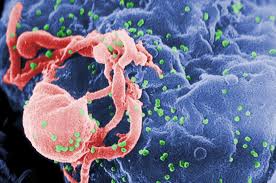Source :- sciencemag.org
Australia continues to be at the forefront of reversing the increase in HIV infections, with a study released today showing that the number of new diagnoses in 2018 dropped 13% year-on-year, to 835 cases. The pace of the decline more than doubled from the previous year, according to the Kirby Institute for Infection and Immunity in Society at the University of New South Wales in Sydney. New infections are at the lowest level in 18 years and the decline is seen across the country, says Rebecca Guy, a Kirby Institute epidemiologist.
The decline in new infections is concentrated among men who have sex with men (MSM), particularly those born in Australia. But that good news is tempered by a modest drop in heterosexually acquired infections, from 238 to 189, and stubbornly persistent levels of new infections in Indigenous peoples, particularly those in remote areas. “Australia is tracking toward elimination of the transmission of HIV,” Gay says, though she and others emphasize there is still much work to be done.
The downward trend in new infections among MSM has been gathering steam for several years, thanks to aggressive promotion of condom use, widely available testing, and successful efforts to get those infected quickly started on antiretroviral drugs, which drive down viral loads, making the host unlikely to pass HIV on to partners.
This arsenal of tools got a big boost in April 2018, when the federal government added pre-exposure prophylaxis (PrEP), a daily pill that protects HIV-negative people from infection, to the Pharmaceutical Benefits Scheme that subsidizes the medicines. This cut the cost of PrEP from AU$10,000 per year to just AU$480 per year, according to the government-funded healthdirect website. Those qualifying for greater subsidies pay even less.
The number of individuals taking advantage of subsidized PrEP soared from just 1980 in April 2018 to 18,530 that December. The Kirby Institute figures that 41% of at-risk Australian men were on PrEP in 2017, says Andrew Grulich, a Kirby Institute medical epidemiologist. Coverage needs to be up to 75% “if we want to keep moving toward HIV elimination,” Grulich says. PrEP uptake is lagging among MSM not born in Australia. “Gay and bisexual men from culturally and linguistically diverse backgrounds really need to be a target for further PrEP rollout,” he says.
It will be particularly challenging to drive down infections in Indigenous groups that suffer high infection rates among those who inject drugs. And diagnoses are typically made at a later stage of infection. This “very different picture” of HIV infection requires “targeted interventions to make sure that Aboriginal and Torres Strait Islander people are not left behind,” says James Ward, an infectious disease specialist at the South Australian Health and Medical Research Institute in Adelaide.
Still, “the decline we’re seeing nationwide in Australia is being seen in very few other places in the world,” Grulich says. The combination of preventions—condom promotion, treatment as prevention, and PrEP—all “act together to decrease HIV infections,” he says. He is convinced that the critical component in the progress is Australia’s universal health care system, which provides “free or easily affordable access to testing, to treatment, and to PrEP.”
